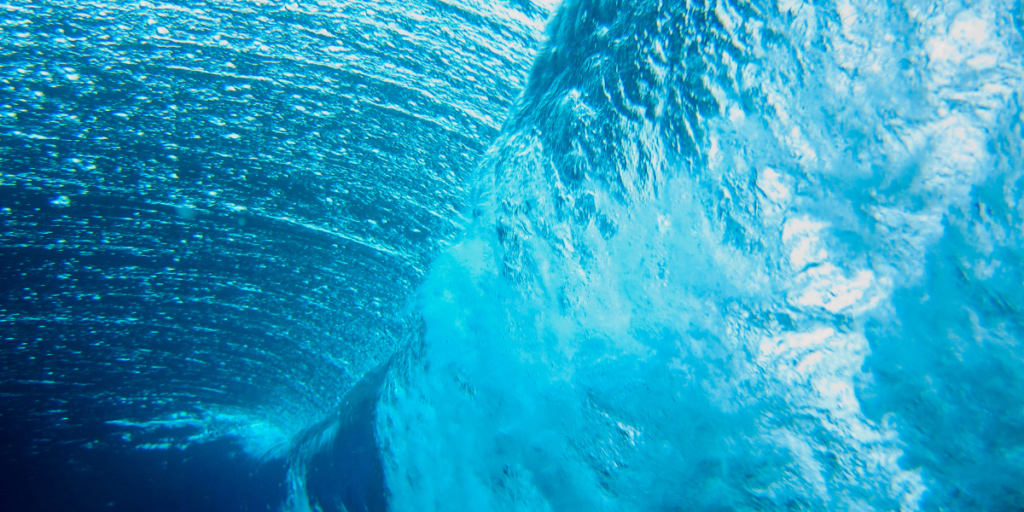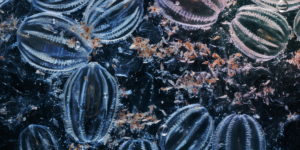Ocean Currents and Their Impact on the Distribution of Marine Organisms
Have you ever wondered how marine organisms are distributed throughout the vast expanse of our oceans?
It turns out that ocean currents play a critical role in this process. These massive water movements not only affect the temperature and salinity of seawater but also determine the distribution of nutrients, plankton, and other essential resources for marine life.
Understanding the impact of ocean currents on marine organism distribution is crucial for conservation efforts, fisheries management, and predicting the effects of climate change on our oceans.
In this article, we will explore the science behind ocean currents and their role in shaping the distribution patterns of various marine organisms. We will also examine case studies that highlight how these currents can transport species across vast distances, affecting both ecosystems at large and individual populations.
Additionally, we will discuss conservation efforts aimed at protecting these vital components of our planet’s oceans.
Key Takeaways
- Ocean currents play a crucial role in the distribution and diversity of marine organisms, distributing nutrients, plankton, and resources for marine life.
- Factors affecting ocean currents include Coriolis effect, temperature, and salinity, and understanding their impact is crucial for conservation, fisheries management, and predicting climate change effects.
- Human activities like oil spills and agricultural runoff can harm coral reefs carried by ocean currents, while climate change and its effects like melting glaciers and ocean acidification impact ocean currents and marine organisms.
- Conservation efforts like marine protected areas, sustainable fishing, and reducing plastic pollution are important strategies for protecting marine organisms and ocean currents, while individual actions and community involvement are crucial in reducing plastic pollution and creating healthier oceans.
Overview of Ocean Currents
You’re going to love learning about ocean currents – they’re like the highways of the sea, transporting nutrients and marine organisms around the world!
There are two types of ocean currents: surface currents and deep water currents. Surface currents are driven by wind patterns, while deep water currents form due to differences in water density caused by temperature and salinity variations.
Factors affecting ocean currents include the Coriolis effect, which causes them to curve based on Earth’s rotation, as well as changes in temperature and salinity.
Ocean currents play an important role in distributing nutrients throughout the ocean, supporting a diverse range of marine life. They can even affect climate patterns by transferring heat from one region to another.
Understanding how these complex systems work is crucial for understanding our planet’s interconnected ecosystems.

Impact of Ocean Currents on Marine Organism Distribution
The flow of the ocean’s natural highways can determine where and how fast sea creatures journey through their aquatic realm, much like a bustling highway system for land-dwellers.
Ocean currents are essential to marine organisms’ survival due to their ecological significance in shaping the distribution of these creatures. The movements of water masses create unique habitats that support different types of marine life, from microscopic plankton to giant whales.
Current patterns play a crucial role in shaping the distribution and diversity of marine organisms. For example, warm-water currents like the Gulf Stream provide favorable conditions for coral reefs to thrive while cold-water currents transport nutrients that sustain planktonic communities at the base of the food web.
These current-driven ecosystems also serve as vital feeding grounds for migratory species such as tuna, sharks, and seabirds. Overall, ocean currents have profound effects on marine organism distribution and contribute significantly to maintaining biodiversity in our oceans.
Case Studies on the Role of Ocean Currents in Marine Organism Distribution
As you delve deeper into the impact of ocean currents on marine organism distribution, it’s worth exploring some case studies.
The Great Barrier Reef is an excellent example of how ocean currents can influence the distribution and diversity of marine life.
Similarly, the Galapagos Islands serve as a perfect illustration of how oceanic circulation patterns can shape the unique ecosystems found in certain regions.
Finally, examining the Gulf Stream offers insights into how this powerful current affects both physical and biological processes across vast distances.
Great Barrier Reef
Explore the stunning Great Barrier Reef and discover how ocean currents shape its diverse ecosystem. This natural wonder is home to thousands of marine organisms, including over 600 species of coral.
The Great Barrier Reef is a prime example of how ocean currents play an important role in marine organism distribution. Here are four ways that ocean currents impact the Great Barrier Reef:
- Currents bring nutrients: Ocean currents carry nutrient-rich waters that support the growth of phytoplankton, which form the base of the food chain for many marine organisms.
- Currents regulate temperature: Water temperatures can vary greatly across different areas of the reef due to different ocean current patterns. These variations in temperature can impact coral growth and reproduction.
- Currents facilitate movement: Some fish species use ocean currents to move between different parts of the reef, allowing them to access new food sources or breeding grounds.
- Currents spread pollutants: Human activities such as oil spills or agricultural runoff can be carried by ocean currents and deposited onto coral reefs, leading to habitat destruction and coral bleaching.
The Great Barrier Reef serves as a reminder that our actions have consequences on our planet’s ecosystems. By understanding how ocean currents impact marine organism distribution, we can better protect these delicate environments from harm.
Galapagos Islands
Get ready to discover the fascinating Galapagos Islands and how they’ve shaped our understanding of evolution.
These isolated islands, located off the coast of Ecuador in South America, are famous for their unique biodiversity and ecological importance.
The ocean currents that flow through these islands play a crucial role in shaping the diversity of marine organisms found there.
The Galapagos Islands are home to a diverse range of marine species, from colorful fish to giant sea turtles and hammerhead sharks.
The presence of these species can be attributed to the ocean currents that bring nutrients and food sources to the islands, allowing for evolutionary adaptations over time.
These adaptations have led to the development of unique characteristics in these creatures, making them perfectly suited for survival in this harsh environment.
As such, studying marine life in the Galapagos provides valuable insight into how organisms adapt and evolve over time, contributing greatly to our understanding of evolution as a whole.
Gulf Stream
You may not realize it, but the Gulf Stream is a major factor in determining the climate of the eastern coast of North America. This warm ocean current originates in the Gulf of Mexico and flows northward towards Europe, carrying heat and salt with it.
As it moves along, it gradually cools down and loses some of its heat to the atmosphere. However, even after traveling thousands of miles, the Gulf Stream still remains warm enough to impact weather patterns in regions as far away as Europe.
The temperature variations caused by the Gulf Stream can be quite significant. In winter months, areas near the coast that are influenced by this current can experience milder temperatures than inland regions at a similar latitude. Conversely, during summertime, coastal areas can be cooler due to sea breezes created by differences in air pressure between land and sea.
Overall, understanding how ocean currents like the Gulf Stream impact our climate is vital for predicting weather patterns and adapting to changing conditions brought on by global warming.
Effects of Climate Change on Ocean Currents
As the world continues to warm, ocean currents are shifting and changing in ways that could have significant impacts on the distribution of marine organisms. The Gulf Stream, for example, is a major ocean current that brings warm water from the tropics up to the North Atlantic. This current has been found to be slowing down as a result of climate change.
As it slows down, it may not be able to bring enough warmth and nutrients to certain areas that rely on it for their marine ecosystems. Climate change also leads to other effects that can further impact ocean currents and the distribution of marine organisms.
For instance, melting glaciers can lead to increased freshwater input into the oceans which disrupts the density-driven circulation patterns that help drive ocean currents. Moreover, as carbon dioxide from human activities dissolves in seawater, it leads to ocean acidification which affects the ability of some marine organisms such as corals and shellfish to form their protective shells or skeletons.
These changes in ocean chemistry can also affect other species indirectly by altering their food sources or habitats.
Conservation Efforts to Protect Marine Organisms and Ocean Currents
You should know that marine protected areas, sustainable fishing practices, and the reduction of plastic pollution in oceans are some of the key conservation efforts aimed at protecting marine organisms and ocean currents.
These measures are based on scientific data showing how overfishing, pollution, and habitat destruction can negatively impact biodiversity and disrupt ecosystem functions such as nutrient cycling, carbon sequestration, and climate regulation.
By implementing these strategies, we can help to restore the health of our oceans and ensure a sustainable future for both humans and wildlife.
Marine Protected Areas
If you’re planning on visiting a Marine Protected Area, be prepared to witness an abundance of sea life that will blow your mind. These areas have been designated for the protection and conservation of marine organisms, providing them with a safe haven to thrive in their natural habitat.
Here are five reasons why visiting a Marine Protected Area is an experience like no other:
- Witnessing unique and rare species of marine animals that can only be found in these protected areas.
- Understanding the importance of conserving our oceans and how it directly affects marine ecosystems.
- Participating in responsible tourism practices by supporting conservation efforts through entrance fees or donations.
- Engaging with local communities who benefit from sustainable tourism practices around Marine Protected Areas.
- Having the opportunity to learn about ongoing research projects aimed at protecting our oceans.
Marine tourism has become increasingly popular, and it’s important for us as visitors to contribute positively towards ocean conservation efforts. By engaging with local communities, we can support sustainable tourism practices while also learning about the importance of preserving our planet’s biodiversity.
Visiting a Marine Protected Area not only provides an unforgettable experience but also allows us to make meaningful contributions towards ocean conservation.

Sustainable Fishing Practices
To truly understand the impact of sustainable fishing practices, it’s important to educate yourself on the methods used and how they promote the conservation of marine life.
Sustainable fishing techniques involve using responsible fishing practices that ensure fish populations are not depleted and ecosystems are not damaged. These practices include reducing bycatch, avoiding overfishing, and protecting essential habitats.
One example of responsible fishing is using selective gear, such as hooks or traps, that target specific species while minimizing harm to other marine organisms. Another example is establishing catch limits and monitoring fishing activities to prevent overfishing.
By implementing sustainable fishing practices, we can maintain healthy fish populations and protect the ocean’s biodiversity for future generations.
Reduction of Plastic Pollution in Oceans
Plastic pollution persists as a pervasive problem in our planet’s precious and pristine oceans. Every year, millions of tons of plastic waste enter the ocean, harming marine life and negatively impacting entire ecosystems. Plastic debris can be found even in the most remote areas of the ocean, from the deepest seafloors to the surface waters.
To tackle this issue, policy changes are necessary to reduce plastic production and increase recycling efforts. Governments should implement measures such as banning single-use plastics, promoting sustainable packaging alternatives, or taxing plastic products.
However, individual actions also play a crucial role in reducing plastic pollution. Community involvement is key to creating awareness about this issue and encouraging people to adopt more sustainable behaviors like using reusable bags or bottles or properly disposing of their waste.
By working together towards reducing our reliance on plastics, we can create healthier oceans for all living organisms that depend on them for survival.
Frequently Asked Questions
How long have ocean currents been affecting marine organism distribution?
Ocean currents have had a long term impact on historical changes in marine organism distribution. Data-driven studies show that these currents play a significant role in shaping the distribution patterns of various species. Join the scientific community in exploring this fascinating topic.
What types of marine organisms are most impacted by ocean currents?
As for the types of marine organisms impacted by ocean currents, marine organism ecology is a complex field. Ocean current modeling has shown that pelagic and benthic organisms are most affected, but research continues to uncover new information. Remember: “The sea, once it casts its spell, holds one in its net of wonder forever.” – Jacques Yves Cousteau
Can ocean currents cause harm to marine organisms?
Ocean currents can harm marine organisms by altering their habitats and disrupting food sources. Potential solutions include monitoring and reducing human impacts on the ocean, as well as developing management strategies to protect vulnerable species. Ecological consequences may include population declines and ecosystem imbalances.
How do ocean currents affect the food chain in the ocean?
Ocean currents play a crucial role in the food chain by affecting productivity and balancing the ecosystem. They transport nutrients, plankton, and other organisms, which supply energy to higher trophic levels. Without them, marine life would suffer.
Are there any ways to control or manipulate ocean currents for the benefit of marine organisms?
To benefit marine organisms, ocean current manipulation is possible through artificial upwelling. The technique increases nutrient-rich water to the surface, promoting growth of phytoplankton and zooplankton. This process can positively impact the food chain and improve overall ecosystem health.
Conclusion
Congratulations, you’ve gained a deep understanding of the importance of ocean currents on marine organism distribution. The impact of ocean currents on the distribution of marine organisms is undeniable. As we’ve learned, these currents play a critical role in transporting larvae and nutrients across vast distances, shaping the ecosystem’s diversity and productivity.
However, climate change poses a significant threat to our oceans’ health and stability. Rising temperatures can alter ocean currents’ patterns and speed, leading to detrimental effects on marine life. But don’t lose hope! Conservation efforts are underway to protect both marine organisms and ocean currents alike.
By preserving vital habitats and reducing pollution levels, we can ensure that these essential processes continue to thrive for generations to come.
In conclusion, understanding how ocean currents influence marine organism distribution is crucial for scientists, policymakers, and conservationists alike. Through careful observation and data-driven research, we can develop effective strategies to preserve our oceans’ health while also promoting sustainable use practices.
Remember that every action counts towards protecting our precious ecosystems – so dive in today!
We would like to thank our sponsor Rapid Fix Garage Doors for supporting our website and if you need a quality garage door service contact them today.




